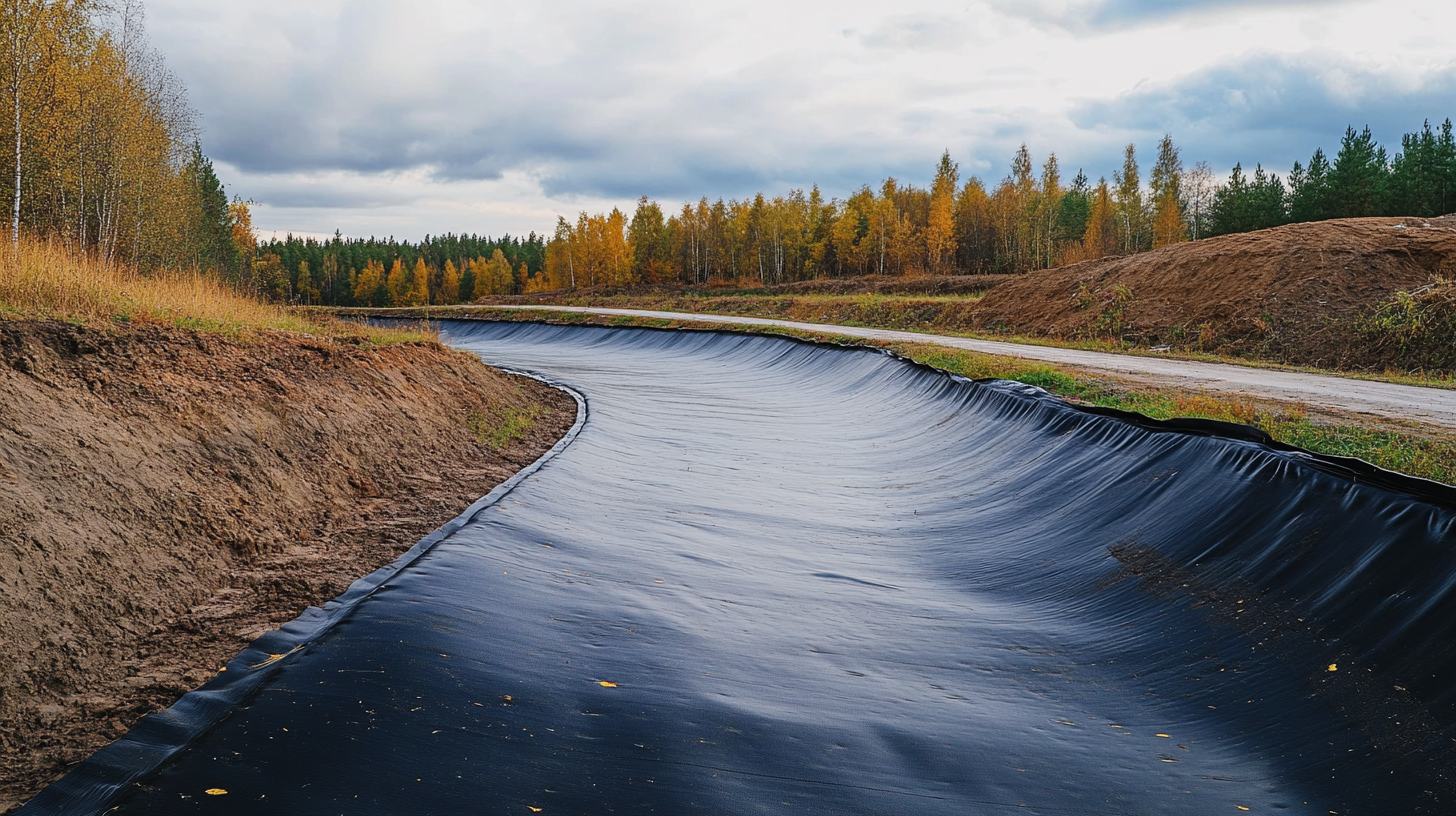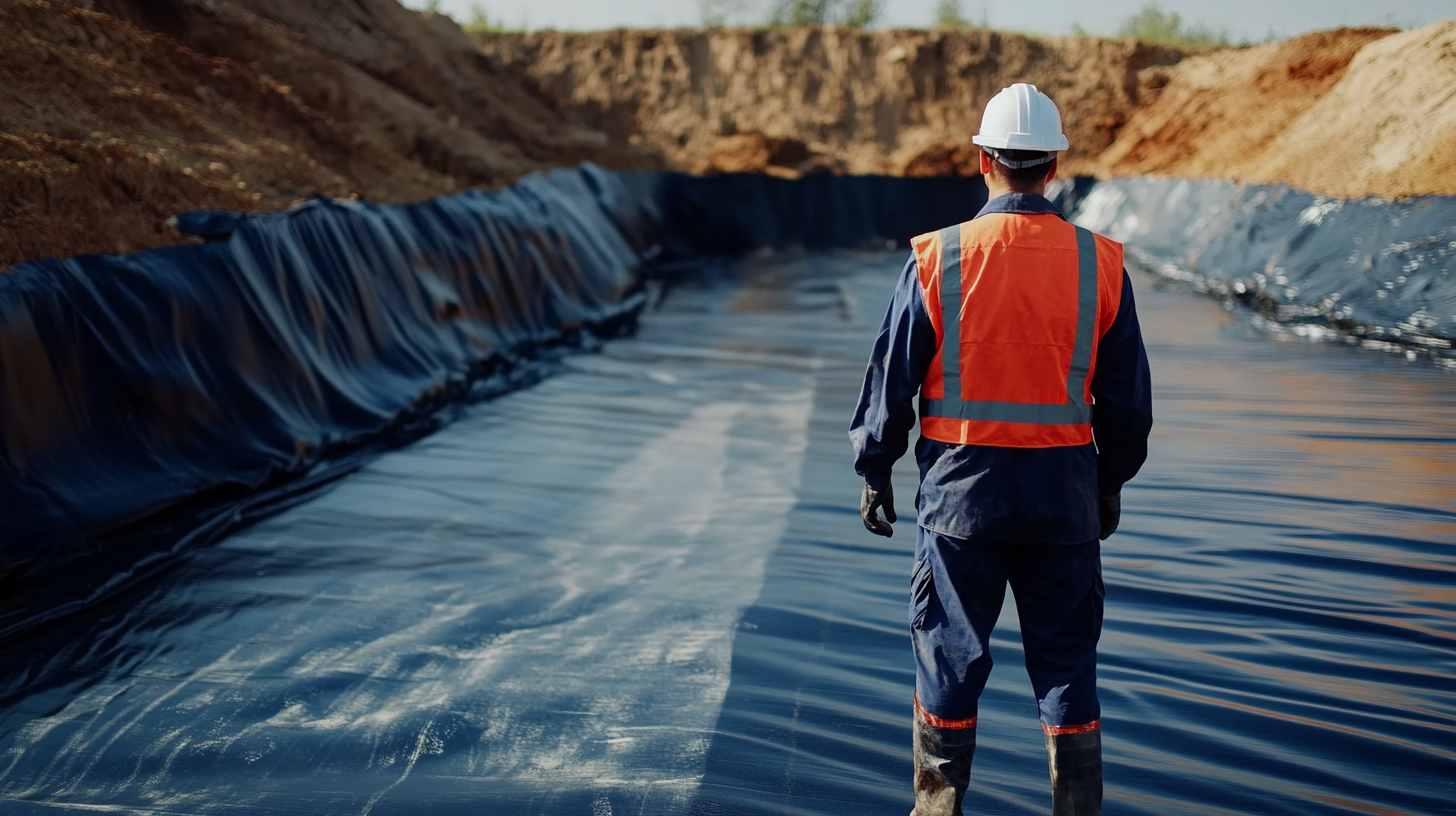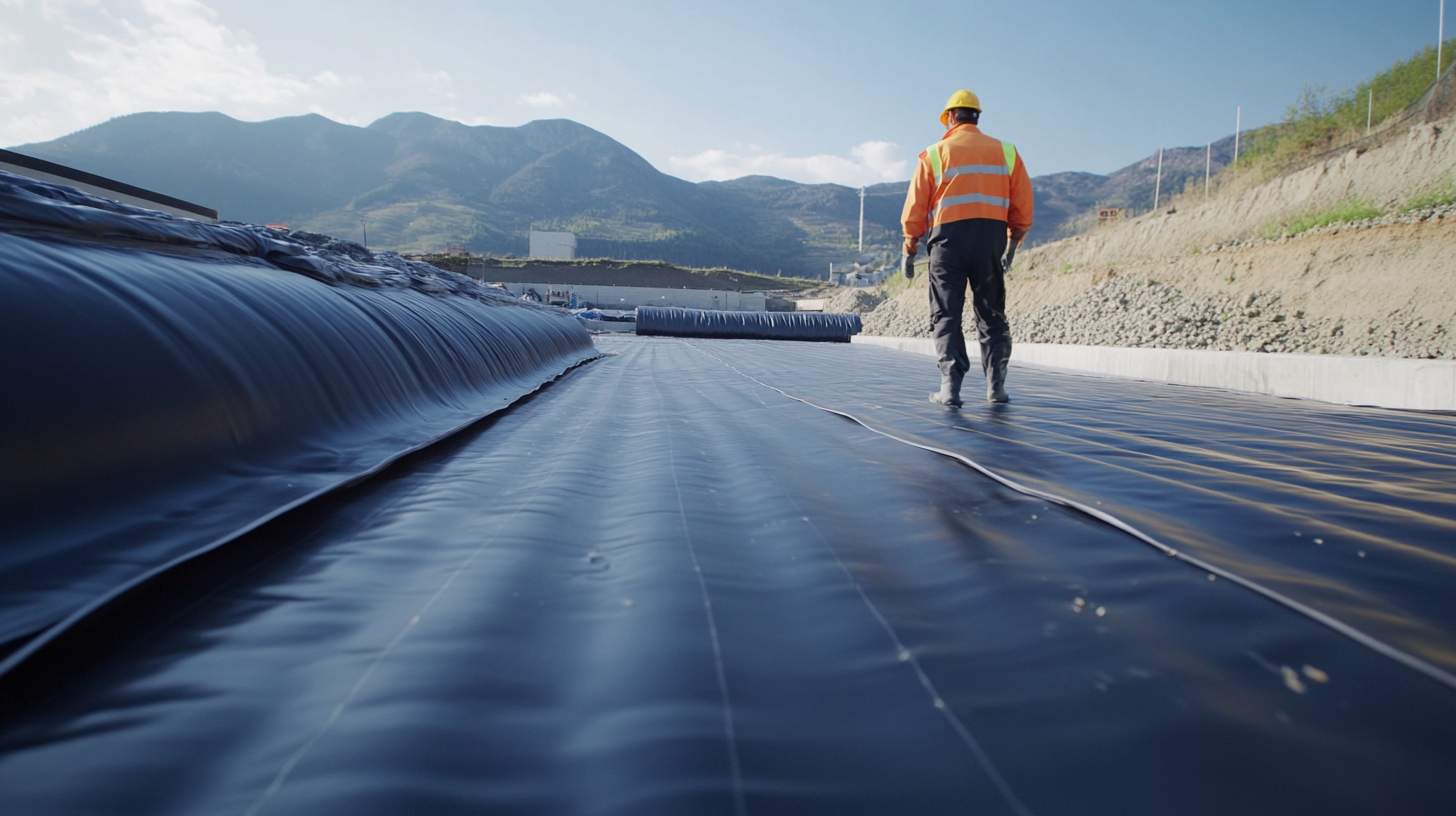Inquiry
Form loading...
- Phone
- E-mail
In recent years, the demand for sustainable geomembrane solutions has surged globally, particularly in the context of environmental protection and resource management. According to a report by Research and Markets, the global geomembrane market is projected to reach USD 3.51 billion by 2026, growing at a CAGR of 8.2% from 2021. This growth is largely driven by the increased focus on waste management, mining operations, and water conservation projects, all of which necessitate the use of high-quality materials like geomembrana in HDPE. With its remarkable impermeability and durability, HDPE geomembranes have become a preferred choice for various applications, making it crucial for procurement strategies in this sector to adapt to evolving sustainability demands.
As industries seek innovative procurement approaches, companies must navigate the complexities of global markets while prioritizing environmental responsibility. The implementation of sustainable procurement strategies not only contributes to better environmental outcomes but can also enhance brand reputation and compliance with regulatory standards. For instance, a study by Global Industry Analysts notes that advancements in manufacturing techniques and materials are enabling companies to produce more eco-friendly HDPE geomembranes. By harnessing these innovative strategies within their supply chains, organizations can ensure they remain competitive while contributing to the global movement toward sustainability in geomembrane applications.

In the ever-evolving world of geomembrane procurement, traditional practices face significant challenges that hinder efficiency and sustainability. One of the primary issues is the reliance on established suppliers and methods, which often prioritize short-term cost savings over long-term benefits. As demand for high-density polyethylene (HDPE) geomembranes grows globally, procurement strategies must adapt to the complexities of sustainability and innovation, moving beyond conventional thinking.
The innovative strategies currently emerging in global markets emphasize the importance of collaborative partnerships, where stakeholders—from manufacturers to end-users—work together to streamline processes and enhance product quality. By leveraging advancements in technology, such as polymer-lined solutions, the industry can tap into previously unrealized potential, resulting in superior materials that offer enhanced durability and environmental performance. This shift not only addresses the critical need for sustainable practices but also minimizes the supply chain complexities that often plague traditional procurement methods.
Moreover, the focus on sustainability in HDPE geomembrane procurement challenges organizations to rethink their sourcing decisions. By prioritizing eco-friendly materials and processes, businesses can reduce their carbon footprint while ensuring compliance with increasingly stringent environmental regulations. Adopting a forward-thinking approach requires not only re-evaluating existing supplier relationships but also engaging with innovative materials that provide greater efficiency and resilience, thereby setting the stage for a more sustainable future in geomembrane applications.

The trend towards sustainable sourcing for HDPE geomembranes is gaining momentum as environmental concerns drive innovation across various industries. With emerging practices such as incorporating recycled ocean plastics and minimizing material usage, companies are exploring new ways to enhance their sustainability credentials. One noteworthy development is the introduction of high-density polyethylene products that utilize 25% less plastic, reflecting a shift towards more efficient and eco-friendly designs. This not only helps reduce waste but also aligns with growing consumer demand for responsible manufacturing practices.
As businesses adapt to these shifts, they are also recognizing the importance of sourcing materials that maintain performance while reducing environmental impact. Sourcing strategies are increasingly focusing on innovative materials that promote sustainability. For instance, methods that leverage molded pulp and other biodegradable alternatives are being explored as viable substitutes for traditional plastics. These materials offer similar reliability while enabling significant reductions in carbon footprints, demonstrating a proactive approach to sourcing.
Moreover, the beauty and personal care industries have been particularly quick to adopt environmentally friendly practices. The rise of refillable packaging options exemplifies how brands can provide convenience and sustainability simultaneously. By focusing on these emerging trends, companies can not only meet regulatory demands but also attract a more environmentally conscious customer base, ultimately contributing to the long-term viability of HDPE geomembranes in global markets.

In recent years, technological innovations have been pivotal in transforming the supply chains of geomembranes, particularly in the procurement of high-density polyethylene (HDPE) materials. The latest advancements in HDPE resin, such as bimodal formulations, enhance performance and longevity, especially in highly oxidative environments. This is significant as HDPE geomembranes are widely utilized in various applications such as containment for waste management and in hydraulic barriers.
Recent studies emphasize that the incorporation of advanced materials into geomembrane production can yield over 20% improvements in durability and resistance to environmental stress compared to traditional products. Furthermore, the trend toward sustainable procedures and materials can reduce overall procurement costs by 15-30% in large-scale projects. Citing industry reports, the global geomembrane market is set to reach approximately $3 billion by 2026, owing to increased demand for resilient and adaptable materials in the face of climate change challenges.
Moreover, innovations in procurement strategies, such as adopting online supply chain platforms, are enabling businesses to optimize sourcing processes for geomembranes. This transition not only reduces lead times but also fosters better collaboration between suppliers and manufacturers, ensuring that sustainable practices are at the forefront of the industry. Recent funding initiatives aimed at small businesses in the hydropower and marine energy sectors further highlight the growing trend toward innovation and sustainability in materials procurement.
When procuring high-density polyethylene (HDPE) geomembranes in global markets, evaluating suppliers is pivotal to ensuring sustainability and quality. According to a report by the Grand View Research, the global geomembrane market was valued at approximately $3.2 billion in 2022 and is expected to expand at a CAGR of 10.2% from 2023 to 2030. This growing demand indicates a larger variety of suppliers, making it essential to adopt best practices in supplier evaluation to ensure the procurement of high-quality materials.
A critical strategy is to assess suppliers based on their environmental certifications and sustainability practices. The ISO 14001 certification, for instance, speaks volumes about a supplier's commitment to reducing environmental impact. A study published in the Journal of Cleaner Production highlights that companies with robust environmental management systems can reduce costs by up to 10% while enhancing product quality. Assessing the supplier’s ability to adhere to such standards not only guarantees adherence to sustainability guidelines but also fosters long-term relationships with responsible partners.
Moreover, understanding the supplier's supply chain transparency is crucial. A report from the World Economic Forum emphasizes that companies with transparent supply chains can better manage risks and enhance their corporate reputation. Evaluating suppliers on their ability to provide clear insights into their sourcing and manufacturing processes ensures that organizations are not only procuring quality geomembranes but are also supporting ethical practices across the industry. Employing these evaluation strategies can lead to more informed procurement decisions, paving the way for sustainable projects in the geomembrane sector.
In recent years, the procurement strategies for HDPE geomembranes have evolved significantly, especially in the context of global markets increasingly prioritizing sustainability. Case studies highlight several successful initiatives aimed at enhancing the sustainable procurement of HDPE geomembranes. These examples demonstrate that integrating environmental considerations into procurement not only reduces ecological footprints but also improves the overall project outcomes.
A notable case is the combination of geosynthetics with natural materials, which has proven effective in addressing geotechnical and geoenvironmental challenges. Studies show that utilizing geosynthetic materials can greatly reduce environmental risks associated with construction and landfill operations. For instance, research from the Geosynthetics Institute indicates that using these materials can lead to a reduction of up to 30% in construction waste, thereby mitigating the environmental impact of plastic use in construction.
Moreover, the push for recycling and innovative design methodologies has facilitated the emergence of low-cost plastic tubular digesters that incorporate HDPE geomembranes. These digesters not only provide a sustainable solution for waste management but also exemplify how the construction industry can leverage waste-derived materials. As the industry continues to respond to sustainability criticisms, the focus on using geosynthetics highlights a proactive approach to minimizing environmental hazards, showcasing the potential for positive change within global markets.
